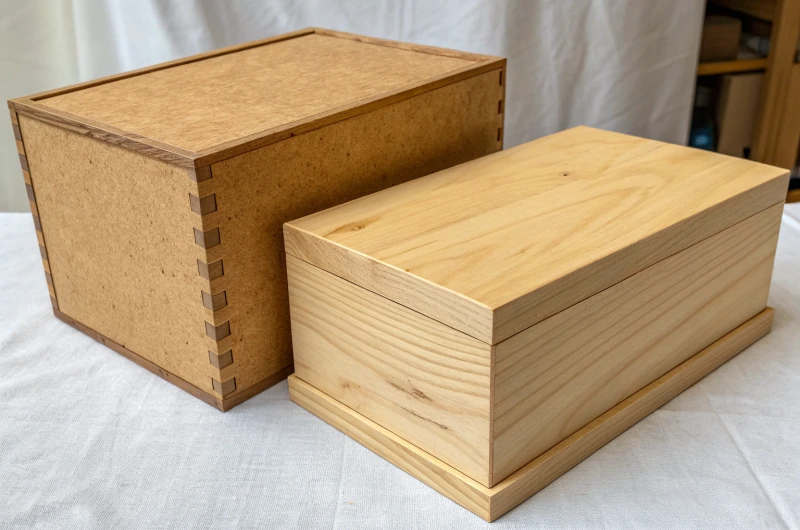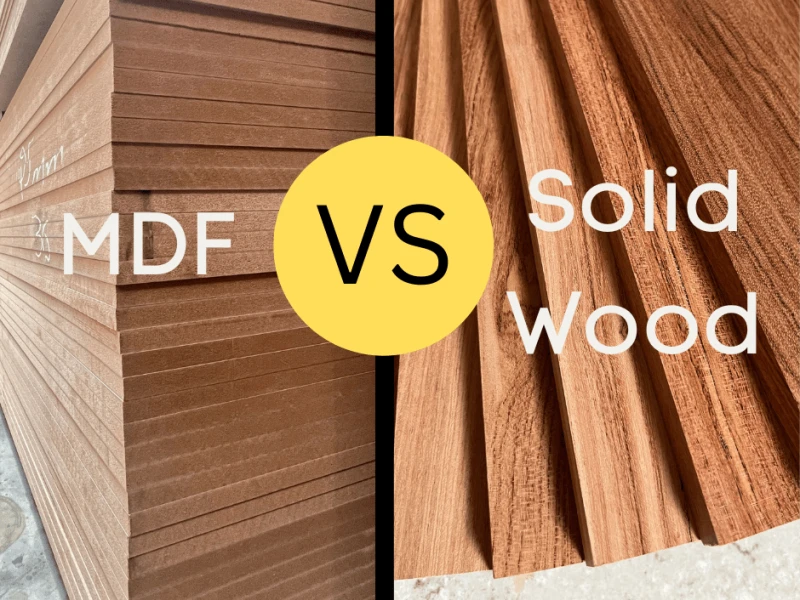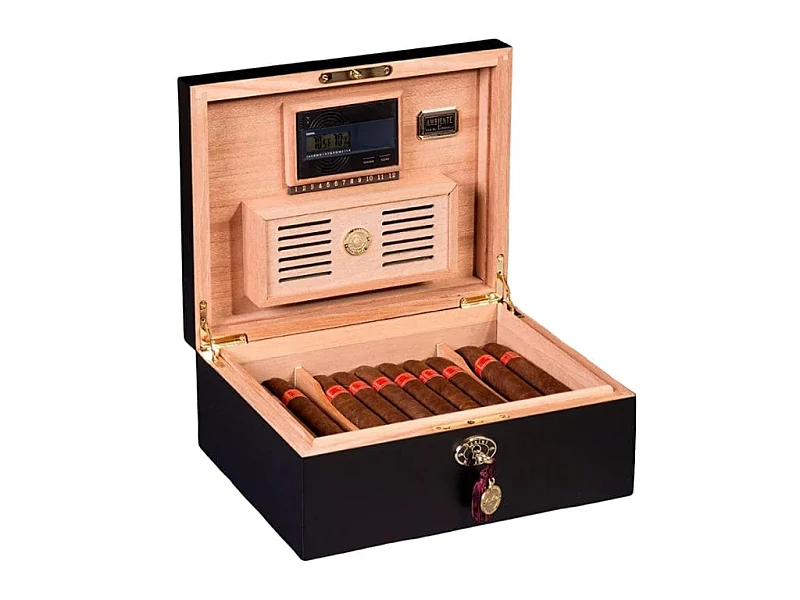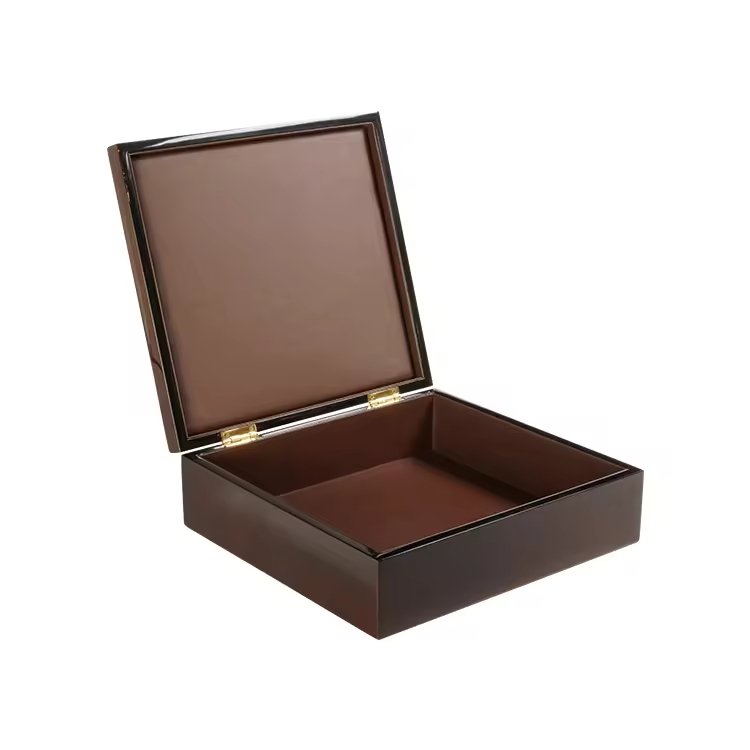
Cigars need consistent humidity, but interior design of a box often mixes many materials.
Spanish cedar should always be prioritized as the core humidity-control material, while secondary layers must be designed around it without blocking its natural function.
If the cedar is minimized or covered too much, the box loses its ability to protect cigars.
Why is Spanish cedar often considered the primary material for humidity regulation in cigar boxes?
Spanish cedar has unique properties that make it essential for cigar storage.
Spanish cedar absorbs and releases moisture evenly, preventing cigar dryness or mold, and also provides a natural aroma that enhances cigar preservation.
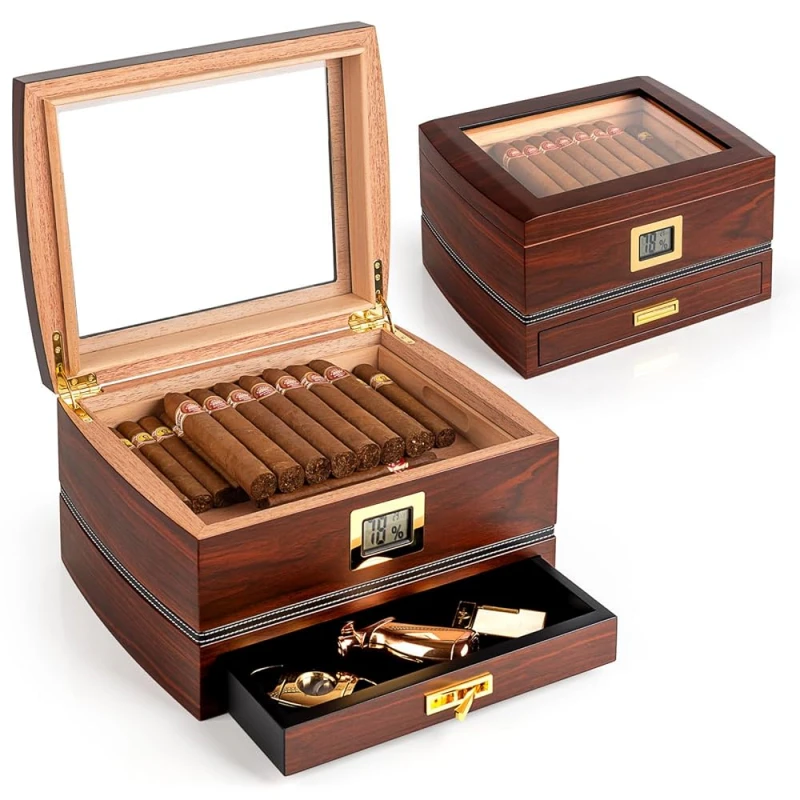
I always emphasize to clients that Spanish cedar is not just a traditional choice, but a functional one. Its cellular structure allows it to “breathe,” buffering sudden humidity swings. Other woods expand or crack unevenly, but cedar balances moisture more naturally.
Cedar also resists mold due to its natural oils. It adds a pleasant aroma that pairs with cigars, unlike MDF or leather, which may introduce unwanted smells. Without cedar, cigars risk losing flavor or developing a harsh dryness.
Why Cedar Is Essential
- Moisture buffer: Smooths out humidity changes.
- Anti-mold: Natural oils prevent fungal growth.
- Aroma enhancer: Complements tobacco scent.
- Dimensional stability: Less warping compared to dense hardwoods.
This is why I always recommend at least a 3–5 mm cedar lining, even in luxury boxes with mixed materials.
How do secondary materials (velvet, leather, fabric, MDF veneer) affect overall moisture balance inside the box?
Secondary materials can add beauty but influence humidity differently.
Velvet and fabric absorb some moisture but do not regulate it; leather and MDF are mostly non-breathable, which can reduce the humidity function of cedar.
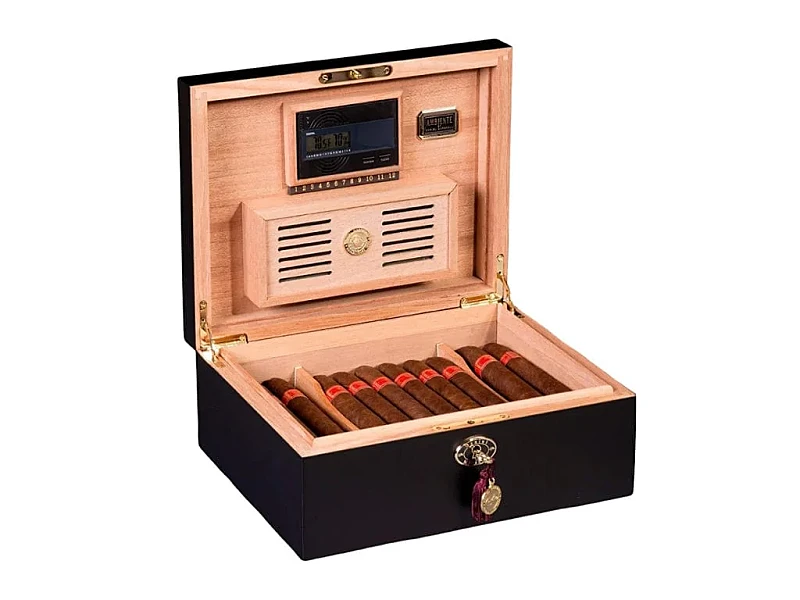
In many luxury cigar boxes, clients request velvet trays, leather-wrapped lids, or MDF veneer panels. These elements add value, but they change the internal environment. Velvet and fabric act like sponges, but they lack buffering stability. They can even hold excess moisture and encourage mold.
Leather and MDF, on the other hand, create barriers. They slow down air exchange between cedar and cigars. If too much surface is covered with non-breathable layers, the cedar cannot perform its role. I have seen boxes where cedar was fully veneered with MDF—these boxes looked good but failed to protect cigars in humid storage.
Effect of Secondary Materials
| Material Type | Impact on Humidity | Risk to Cigars |
|---|---|---|
| Velvet/Fabric | Absorbs quickly, unstable | Can trap moisture, mold risk |
| Leather | Non-breathable | Blocks cedar regulation |
| MDF Veneer | Non-breathable | Limits cedar buffering |
| Paper/Decor | Minor impact | Neutral if thin and porous |
The more non-breathable layers, the weaker the box’s humidity balance becomes.
Could non-breathable layers block or weaken the humidity buffering role of cedar?
Yes, non-breathable materials reduce cedar’s effectiveness.
When cedar is covered by leather, MDF, or laminates, its pores cannot interact with air, and its humidity-regulating role is weakened.
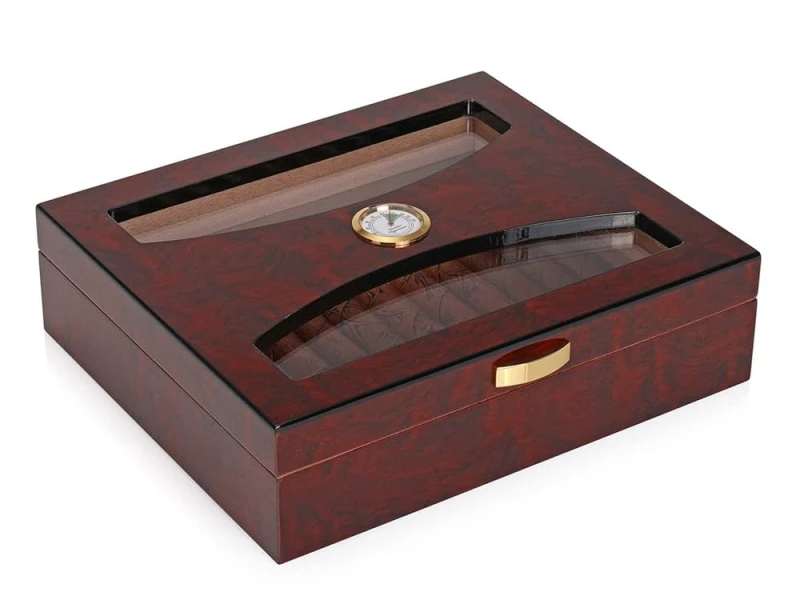
I once received a complaint from a European buyer whose leather-wrapped cigar boxes failed in just six months. Cigars dried out quickly, despite a thick cedar base. The issue was simple: the leather layer sealed most of the cedar surface. The cedar could not absorb or release moisture, leaving cigars unprotected.
Cedar works like a natural sponge. If you wrap or laminate over it, you block that sponge. The box may look elegant, but its function is compromised. This is why I always leave at least the interior walls directly exposed cedar, even when the outside is fully decorated.
Rule of Thumb
- Exposed cedar surface = Active humidity control.
- Covered cedar surface = Reduced buffering.
- Fully sealed cedar = Decorative only, no regulation.
For true cigar protection, cedar must remain in direct contact with the air inside the box.
How should the thickness and placement of cedar lining be designed when multiple materials are stacked?
Placement and thickness decide whether cedar can still function.
A 3–5 mm cedar lining on all interior walls is recommended, applied as the first layer inside the box, before decorative materials.
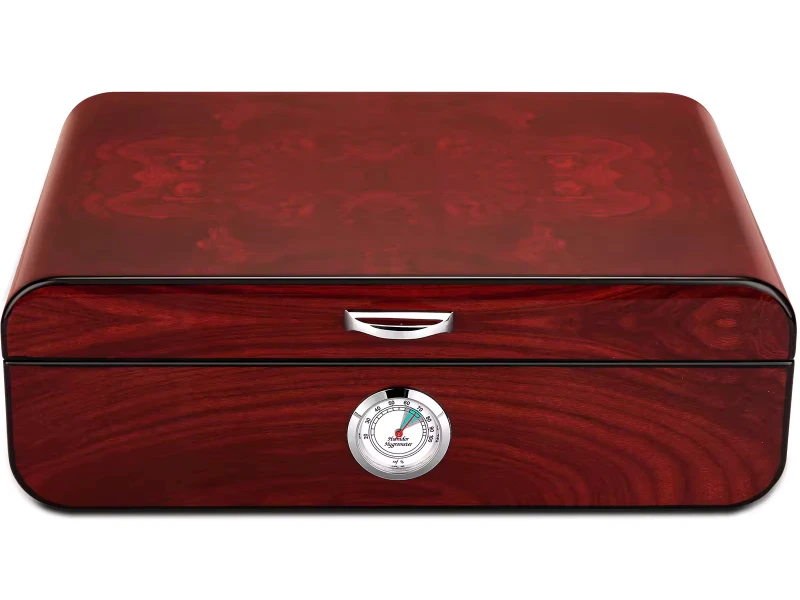
If cedar is too thin (under 1 mm), it cannot buffer humidity for long. Cigars dry or swell quickly after external conditions change. Thick cedar layers act as a reservoir, releasing or absorbing moisture gradually.
Placement is also critical. Cedar should line the lid, walls, and base directly, not just the base. If decorative velvet or leather is used, it should be applied on removable trays or compartments, leaving the main cedar walls exposed.
Best Practices
- Thickness: Minimum 3 mm, ideally 5 mm for long-term use.
- Placement: Cover all interior walls and lid.
- Stacking: Add decorative materials only after cedar lining.
- Trays: Use cedar as the base layer under velvet or fabric.
This ensures cigars always remain surrounded by a cedar buffer zone.
What risks arise if decorative layers dominate over functional humidity-control materials?
When decoration dominates, function is lost.
If velvet, leather, or MDF dominate inside, cigars face risks of uneven humidity, odor transfer, and faster degradation.
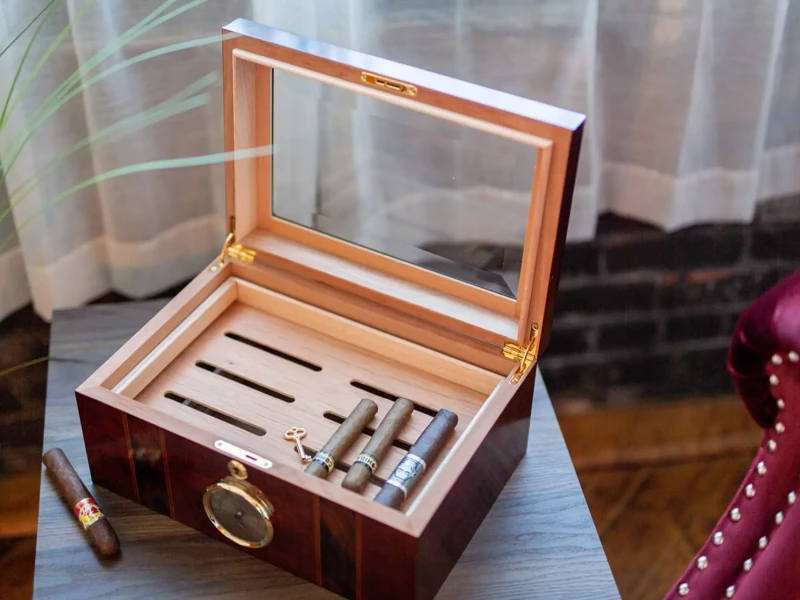
Luxury boxes often aim for aesthetics. But when clients choose full velvet interiors without cedar, cigars suffer. Fabric absorbs moisture too fast, causing swings instead of buffering. Leather introduces foreign smells. MDF adds no protection and sometimes emits chemical odors.
I recall a batch of fabric-heavy boxes exported to the Middle East. They looked stunning, but within months, cigars cracked and lost flavor. The root cause was clear: no cedar contact, only fabric and MDF.
Risks When Decoration Dominates
- Humidity swings: No buffer against changes.
- Mold growth: Fabrics and velvet trap excess moisture.
- Odor transfer: Leather or glue smells absorbed by cigars.
- Prestige loss: Beautiful box, poor preservation.
Decoration should always complement, not replace, cedar’s function.
How can manufacturers balance luxury aesthetics with reliable humidity performance for cigar preservation?
The solution lies in smart layering and selective exposure.
Manufacturers can balance by using cedar as the primary lining and adding decorative materials only on removable trays or non-critical areas.
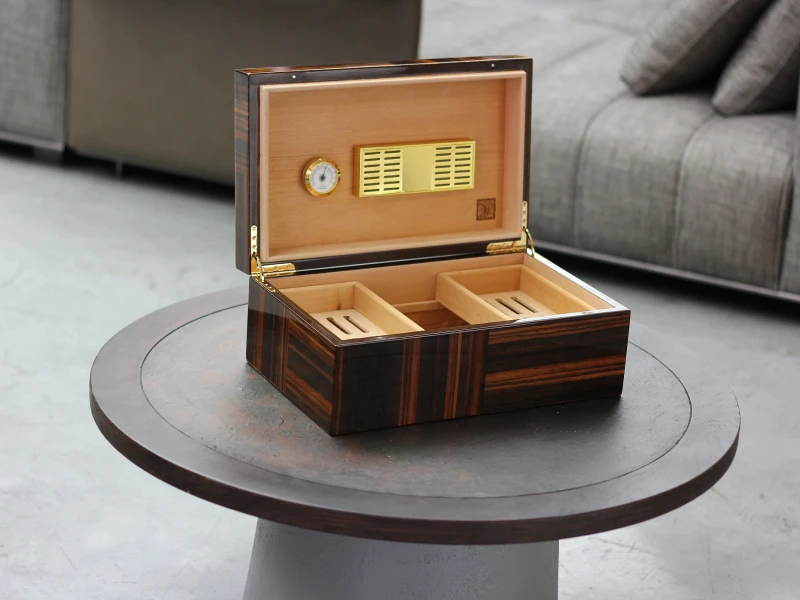
I usually advise clients to treat cedar as the foundation. Expose it on the main interior walls. Then add decorative elements—velvet trays, leather accents, metal hinges—for branding and luxury appeal. This way, cigars stay protected, but the box still looks premium.
Another method is partial coverage. For example, a cedar base with a velvet inlay on just the cigar dividers. The core environment remains stable, but the touch and visual effect improve.
Balancing Approach
- Keep cedar exposed on main surfaces.
- Add velvet or fabric only on trays or inserts.
- Use thin decorative layers to avoid blocking airflow.
- Test the box with humidity packs before mass production.
This balance ensures cigars are both safe and beautifully presented.
Conclusion
Spanish cedar must always lead humidity control in cigar boxes. Decorative materials should only enhance, never replace, its protective role.
Brand Name: WoodoBox
Slogan: Custom Wooden Boxes, Crafted to Perfection
Website: www.woodobox.com
WhatsApp: +86 18359265311

